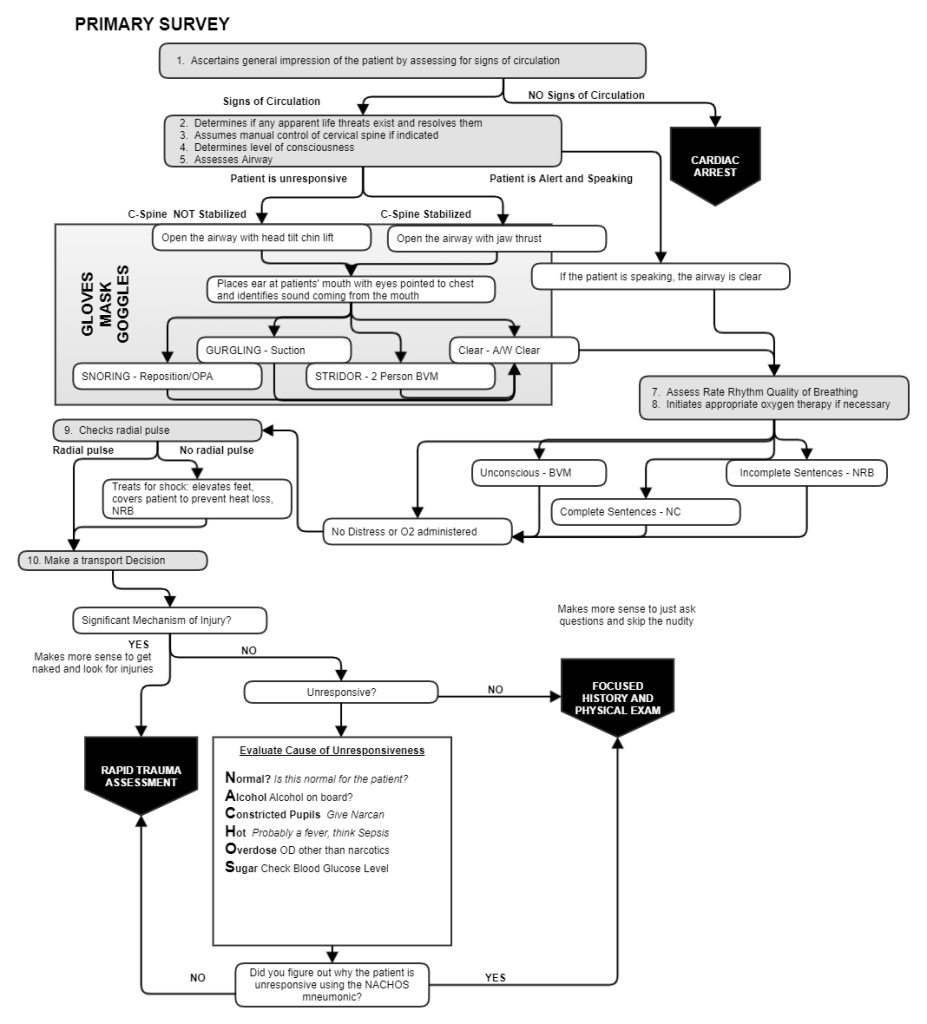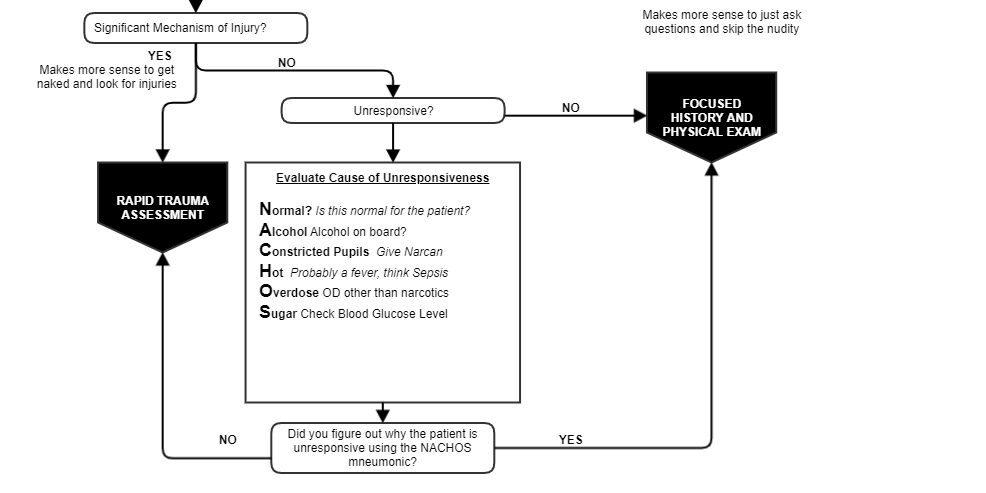How To Protect Yourself From Disease During the Primary Survey
Published (updated: ).

When the patient is unconscious, they are not in a position to tell you they have a contagious disease.
Let’s say the patient is found unconscious. If the ambulance crew doesn’t know why the patient is unresponsive, then how would they know that the patient doesn’t have some contagious disease? If the patient could talk, maybe they would tell you to put on a mask because they have COVID or something.
Being aware of the situation you are in will cause you to make better choices about your PPE
This is the message of georgiaemsacademy to the EMS world. Take only the precautions that are necessary and always be aware of the situation to ensure that you have the correct PPE to protect from contracting a disease. The CLOSE pneumonic is based on the order of contact. Medics should be aware that the patient is coughing before they even enter the room.
| YOU SEE | STOP AND DO THIS | |
| Cough | The patient is coughing, wheezing, sneezing, or appearing to have problems breathing | Don mask, goggles, and gloves |
| Liquids | The patient is covered with blood, urine, sweat, vomit | Don gloves |
| Odor | Do I smell feces or urine? | Don gloves |
| Story | Am I at treating a patient with MRSA or ebola? | Don mask, goggles, and gloves |
| Elevated Temp | Does the patient have a fever? | Don mask, goggles, and gloves. |
If the patient is unresponsive when the medics assess level of consciousness in the primary survey, MAX PPE is indicated; this is gloves, goggles, and mask (N-95).
After donning the appropriate PPE for the situation, the medics needs to rule out some obvious causes of altered mental status. For this, georgiaemsacademy developed the NACHOS pneumonic.
- Normal – Is this normal for the patient. Sometimes patients you pick up are always unresponsive due to their condition. Maybe this is normal after the patient has a seizure. Maybe this is something that happens to the patient, and a third party called 911.
- Alcohol – Alcohol can cause altered mental status. It’s easy to tell if a person has been drinking just by smelling their breath
- Constricted Pupils – Constricted pupils tell the EMS crew that the patient has overdosed on a narcotic. Narcotics are central nervous system depressants that can stop patients from breathing.
- Hot – Patients that have a fever probably have an infection. An infection can lead to sepsis which can lead to septic shock. Hot skin could therefore explain why the patient is unresponsive.
- Otherwise overdose – A patient could have overdosed on a benzodiazepine or other drug that could explain the patients altered mental status.
- Sugar – Check the patient’s blood glucose level. If the blood glucose is under 60 mg/dl, the patient is experiencing hypoglycemia. If the patient is unresponsive, oral glucose can’t be given. Only AEMT’s and Paramedics can administer intravenous dextrose to raise the patient blood sugar level.

If the nature of unresponsiveness can be determined NACHOS, the ambulance crew can just transport the patient to the hospital without worrying if they should be checking for injuries. Else, if the cause of the unresponsiveness can’t be found with NACHOS, the medics should immediately stabilize the cervical spine in the neutral and in line position and begin cutting the patient’s clothing to look for injuries.
